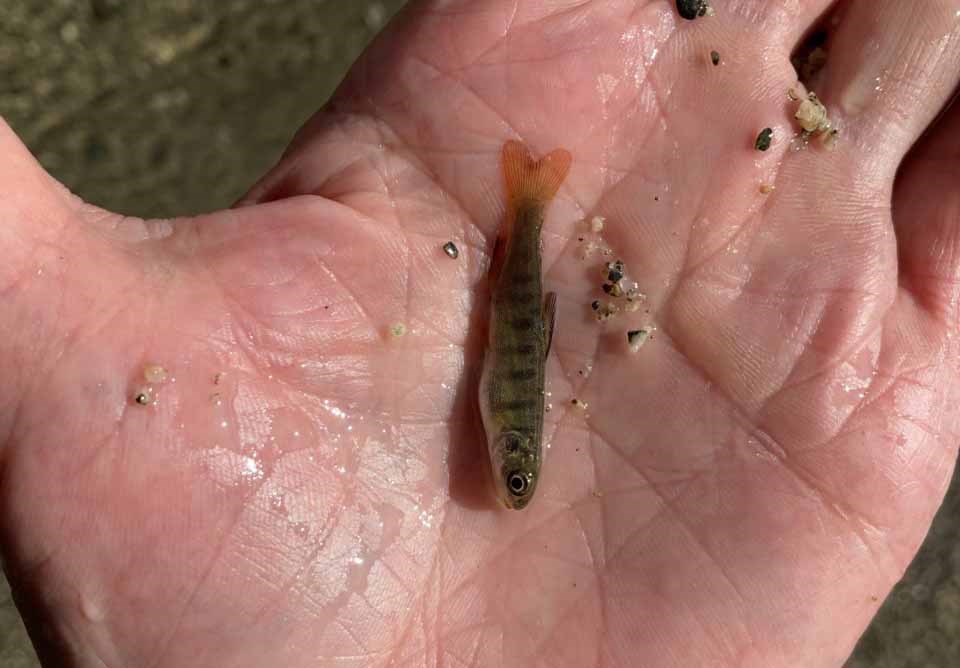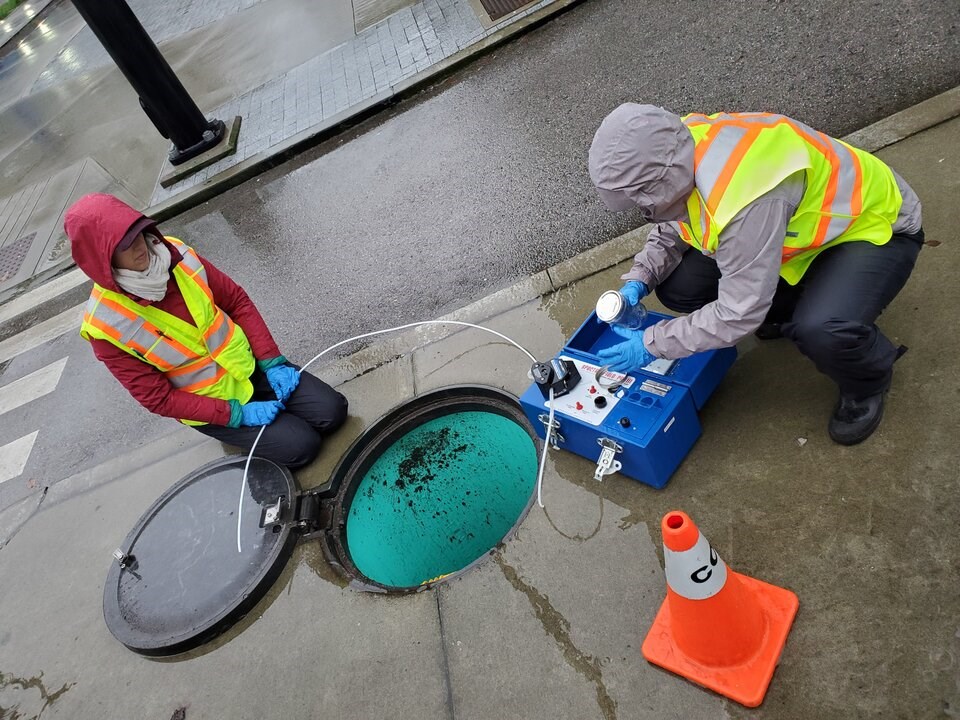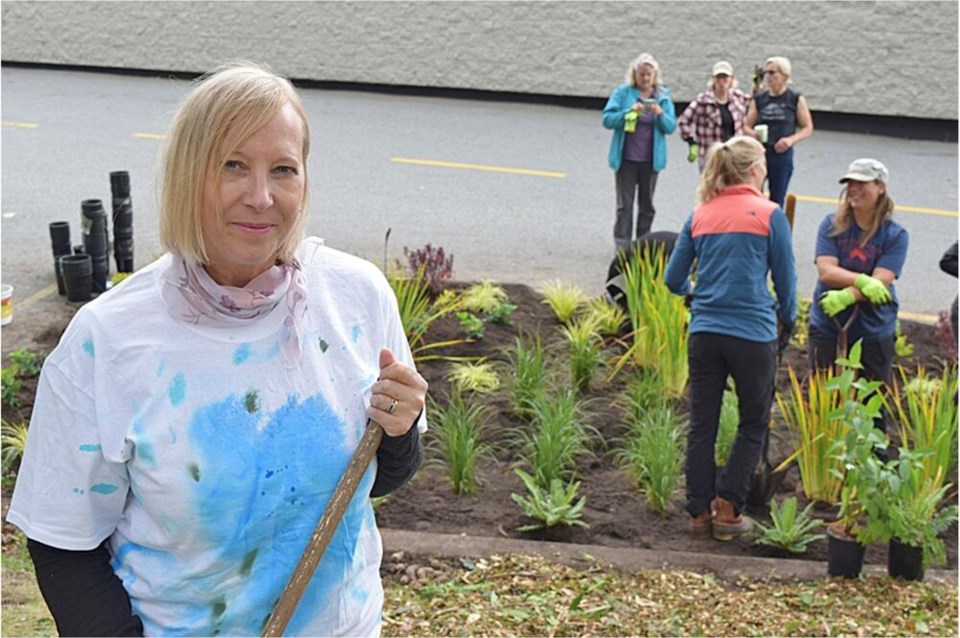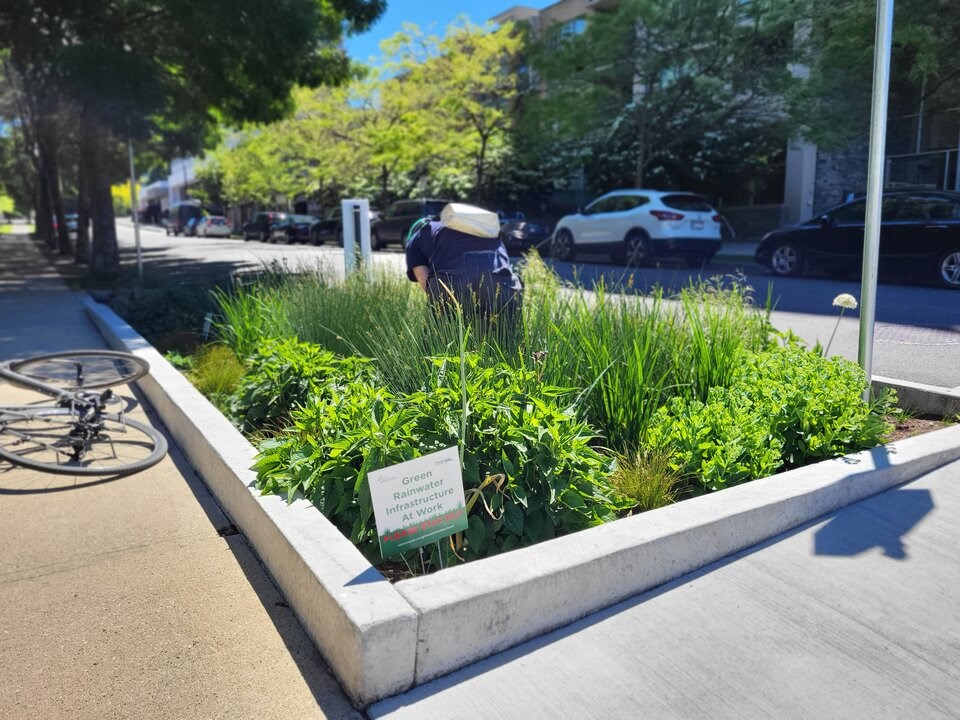Rain gardens can filter more than 90 per cent of a toxin highly lethal to salmon that washes off roadways into rivers, B.C. researchers have found.
Traditional stormwater management aims to move rainwater off streets, into storm drains and rivers as fast as possible. Rain gardens turn that logic on its head. By “re-wilding” city rooftops, intersections and avenues, green infrastructure, the mix of plants and engineered soil matrices acts like a sponge to slow down stormwater so it rarely reaches dangerous peak flood levels.
They have proven effective tools to reduce flooding and regulate extreme temperatures in urban areas. But the latest study, published Friday in the journal Environmental Science Technology Letters, offers direct evidence of what many proponents have suspected all along: rain gardens also act as a buffer to filter out one of the most toxic compounds humanity has ever introduced into salmon habitat.
One car tire offers a billion times the lethal dose
As early as 2011, researchers in Washington found exposure to road runoff was linked to a 40 to 90 per cent mortality rate in returning coho salmon. It took another decade to understand the most dangerous of the toxins in road runoff was 6PPD-quinone, a compound used to stabilize tire rubber and prevent its degradation.
Every set of four car tires is thought to put a pound of 6PPD into the environment. But just one of those tires provides a billion times the lethal dose for salmon.
“It’s the number two most toxic chemical to aquatic organisms we have ever found,” said Timothy Rodgers, the study’s lead author and a researcher at the University of British Columbia (UBC).
“The salmon swim around in circle and sort of flip over. It’s so fast. They die within a couple hours.”

Coho proved the most vulnerable, with 100 per cent of the fish getting killed off within hours of swimming in contaminated stormwater. When confronted with the toxin, steelhead faced mortality rates of up to 40 per cent, while for chinook, the death rate dropped to up to 13 per cent. Sockeye were not killed immediately but are among a broad range of fish scientists suspect could suffer long-term chronic effects from the tire toxin.
Washington’s Department of Ecology investigated alternatives to the toxic tire compound, but a 2021 memo concluded there “may be room for improvement” but that it was “difficult to determine” whether alternatives were any safer.
So far the only solution has been to prevent the toxin from getting into a river in the first place.
Vancouver rain garden gets global-first test
There’s already good evidence rain gardens absorb heavy metals or PCBs. And some lab studies have shown tainted water filtered through columns of engineered soil and plants protected coho salmon from the compound’s deadly effects.
But Rodgers said nobody had ever field tested how well the green infrastructure protected salmon from the deadly 6PPD-quinone compound (Rodgers says the only toxin more deadly to salmon is parathion, a pesticide developed by a German scientist during the Second World War and later widely banned).
“Since we never really realized what this chemical was before, it hadn't been tested,” he said. “We wanted to see how it worked in real life.”
Together with his colleagues from UBC and Concordia University, Rodgers partnered with the City of Vancouver to test what makes the most effective rain garden and whether they were up to the task of capturing the tire poison.
In the summer of 2022, the team moved to test one of 319 green rainwater infrastructure projects the City of Vancouver has built over the past 20 years. In this case, they would be testing the effectiveness of a 22-metre-squared rain garden, installed a year earlier at the corner of West 8th Avenue and Pine Street.
In theory, the plan was simple: spike the nearly half-metre thick mix of compost and sand with a mix of the tire compound, plastic-derived chemical BPA, an insecticide, and tracer chemicals. Then measure what comes out the other side.

A powerful natural filter
At the end of July, the toxic soup was mixed into a rain barrel and dumped in the rain garden. Over three hours, the researchers flushed 14,000 litres of water through the engineered natural filter and measured the water quality of the effluent that dripped down into the sewer. A few days later, they did it again, only this time without all the chemicals.
The experiment was designed to simulate the largest rainfall event that did not overwhelm the system and lead to an overflow. They also looked to test how the green infrastructure would perform when rain fell after several dry spells.
Back in the lab they analyzed their samples. The data helped them simulate how a rain garden would respond to 28 storms as well as the average water Vancouver receives in a year. Success, they decided, would be measured by how much of the 6PPD-quinone made it though the rain garden and into the storm water system.
In the end, they found the rain garden removed more than 95 per cent of the toxic tire compound. Nearly all of the toxin was captured by the rain garden itself or passed into nearby soil, where it remained or was absorbed by plants.
“Basically, the system works really, really well,” said Rodgers. “For everything other than the biggest storm, it’s capturing greater than 90 per cent of the chemical.”

But Rodgers warned that during extreme rainfall events, overflowing contaminated water could allow up to half of the tire toxin to reach the storm drain.
“Those once-in-100-year events, you're gonna see a lot of the chemical actually bypassing the system through that overflow,” he said.
Rodgers and his colleagues are now looking at ways to improve the design of rain gardens to prevent the system from getting overwhelmed by intense rainfall events expected to become more common in a changing climate. His team is modelling whether more compost will help the garden absorb more tire toxin, or if expanding a ponding zone will allow heavy rain to pool before it filters into a stream or river.
In other cases, said the scientist, there will only be one way to keep up with more intense rainfall — build bigger gardens.





